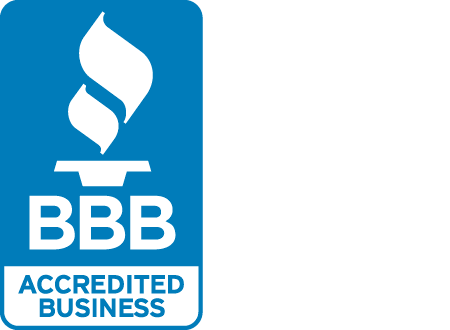Energy Saving Tips
Energy Savings: Practical Steps to Lower Costs
In January 2023, the state of Wisconsin experienced an increase in energy costs, with the price per kilowatt-hour (kWh) rising to 16.05 cents, compared to 14.81 cents in January 2022. This represents a significant increase of 8.37%. This rise in energy costs can have various implications for both households and businesses in Wisconsin, as well as the broader state economy.
Increase In Energy Costs
One of the immediate impacts of the increase in energy costs is the burden it places on households. Families may find themselves allocating a larger portion of their budget to cover essential energy expenses, potentially affecting their overall quality of life. Additionally, individuals on fixed incomes or with limited financial resources may face greater difficulties in meeting their energy needs, potentially leading to energy insecurity.
Businesses are also affected by the rise in energy costs. Manufacturing, agriculture, and other energy-intensive industries could see their operational expenses increase, which may lead to higher production costs. In turn, this could potentially result in higher prices for goods and services, impacting consumers. Small and medium-sized enterprises, in particular, might face challenges in maintaining profitability as energy expenses rise.
As homeowners, we're always on the lookout for effective ways to trim our expenses. With energy costs on the rise and environmental concerns gaining more attention, reducing electricity usage is not only beneficial for your wallet but also for the planet. In this comprehensive guide, we'll explore various strategies that homeowners can implement to reduce their electric bills. From simple, everyday changes to larger-scale home improvements, we'll delve into practical, cost-effective methods to decrease energy consumption, complete with estimated savings to help you understand the impact of these changes.
To begin saving effectively, it's crucial to understand how electric bills are calculated. The cost is primarily determined by the kilowatt-hours (kWh) of electricity used. Seasonal factors, such as heating in winter and cooling in summer, contribute significantly to energy usage. Other elements, including home appliances, lighting, and electronic devices, also add to your overall consumption. By understanding these factors, you can pinpoint areas where energy savings can be most impactful. For example, if the average electric bill in the area is around $168 per month, reducing energy consumption by only 20% could save about $403 annually.
In an uninsulated home, around 60% of heat is lost through the roof and walls.
Lighting Solutions
One of the easiest and most cost-effective ways to reduce your electricity bill is by updating your lighting. Traditional incandescent bulbs consume far more energy than their modern counterparts. By switching to LED bulbs, you can see a significant decrease in energy usage. LEDs use up to 90% less energy than traditional bulbs and can last 25 times longer. Let’s say your home has 20 incandescent bulbs (60 watts each), used for an average of 5 hours a day. By switching to 20 LED bulbs, you could potentially save over $500 per year. This significant reduction in energy consumption demonstrates the cost-effectiveness of using energy-efficient LED bulbs.
Smart lighting solutions like dimmers and motion sensors can add further savings. Dimmer switches can reduce energy use by up to 40% when lights are used at a lower intensity, potentially saving an additional $10-$20 per year per fixture. Motion sensors in less frequently used areas can also reduce electricity use, saving up to $15 per year for each fixture by ensuring lights are only on when needed.
Heating And Cooling Efficiency
Heating and cooling systems play a crucial role in determining your monthly electric bill. These systems are responsible for maintaining a comfortable temperature inside your home throughout the year, but they can also consume a significant amount of electricity, which can be costly. In this region, where winters can be chilly and summers can be hot and humid, understanding how to efficiently use your heating and cooling systems can lead to substantial savings on your energy bills. When you lower your thermostat by 7°F for 8 hours a day during winter, you're essentially reducing your heating costs during that time frame by about $100.80 annually.
If you decide to take a more substantial step and lower your thermostat by 10°F for 8 hours daily, you can expect even greater savings. While the exact figure can vary based on various factors, it's reasonable to estimate that you might save approximately $120 annually by implementing this more significant adjustment to your thermostat.
Regular HVAC maintenance also plays a crucial role in energy efficiency. An unmaintained system can use up to 15% more energy than one that’s regularly serviced, potentially costing an extra $90 per year based on the average heating and cooling costs. Meanwhile, upgrading to an energy-efficient system, though initially more expensive, could translate to annual savings of $120-$240, depending on your current system's efficiency and usage patterns.
Appliance Use And Upgrade
Your monthly bill is influenced to a great extent by the various home appliances you use. However, there are ways to mitigate these costs and make your home more energy-efficient. One of the most effective strategies is to choose energy-efficient appliances. Consider, for example, your refrigerator, an essential appliance in any household. An Energy Star-rated refrigerator consumes approximately 9% less energy than a standard model. This seemingly modest percentage can translate into substantial savings over time. Let's delve into this a bit further to understand the potential impact.
Suppose your current refrigerator is a standard model. If you switch to an Energy Star-rated refrigerator, which is specifically designed to be more energy-efficient, you could reduce its energy consumption by 9%. Over a year, which adds up to $180 in savings. These are tangible savings that can significantly offset the initial cost of purchasing an energy-efficient appliance.
But energy efficiency doesn't stop at buying new appliances. There are everyday practices you can adopt to further reduce your energy consumption and save money. Let's explore some of these practices and see how they can contribute to your annual savings.
Consider your dishwasher, for example. Many dishwashers come equipped with a heated dry cycle, which can be convenient but energy-intensive. By opting to air-dry your dishes instead of using this feature, you can save a notable amount. Over a year, this can translate to $120 to $180 in savings.
Another common energy-saving practice involves identifying and unplugging "energy vampires" in your home. These are devices and chargers that draw power even when they're not actively in use. Surprisingly, these can account for up to 10% of a typical home's electricity consumption.
By adopting the habit of unplugging chargers, turning off power strips, and disconnecting devices when they're not in use, you could potentially save around $17 per month or $204 annually.
The Earth receives about 173,000 terawatts of solar energy continuously, which is more than 10,000 times the world’s total energy use.
Insulation And Weatherization
In the ever-changing climate of Southeastern Wisconsin, maintaining your home's insulation and weatherization is crucial. Adequate insulation ensures your home stays cozy during the winter and comfortable during the summer, which ultimately lessens the demand for extensive heating and cooling. When you invest in improving your insulation, you could reduce your annual heating and cooling expenses by around 15%. For the average household, this translates to an estimated yearly savings of approximately $302.
Weatherization measures involve simple adjustments and improvements to your home to make it more energy-efficient and resistant to outdoor weather conditions. These measures can include sealing drafts, adding weatherstripping, insulating windows, and more. By implementing these cost-effective weatherization techniques, you can increase your annual savings. Let's consider a conservative estimate of a 10% increase. This would result in an additional annual savings of $201.60.
Renewable Energy Options
For those looking at long-term solutions, renewable energy options like solar panels are becoming increasingly viable and affordable. While the initial investment can be significant, solar panels dramatically reduce or even eliminate electric bills over time. In Southeastern Wisconsin, solar panels can provide an average saving of about $600-$1,200 annually, depending on the size of the installation and the household's energy usage.
Reducing your electric bill involves a combination of understanding your energy usage, making smart home upgrades, and adopting efficient daily practices. These changes not only lead to noticeable cost savings but also contribute to a healthier environment. If you're considering taking steps towards a more energy-efficient home, Lehmann Electrical & Design is here to guide you. Our team of experts can provide professional advice and services, from upgrading lighting to installing state-of-the-art energy-efficient systems.
Contact us today for a free estimate.
All Rights Reserved | Lehmann Electrical + Design


